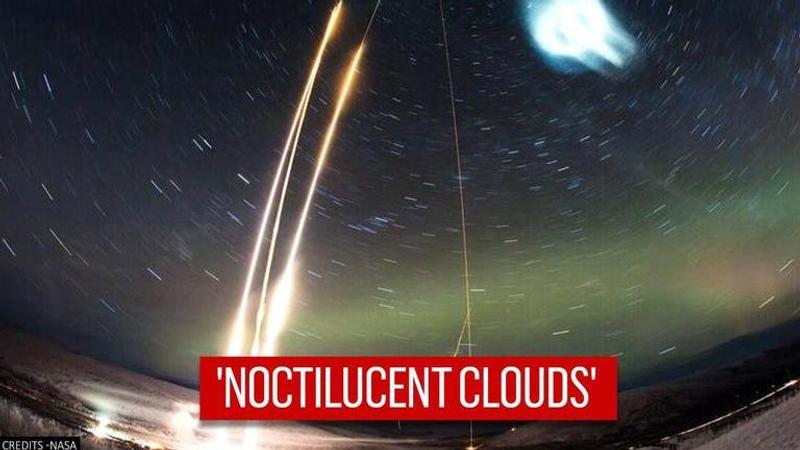Published 20:30 IST, March 1st 2021
NASA artificially creates 'night-glowing cloud' on edge of Earth's atmosphere, see picture
“Polar mesospheric clouds, or PMCs, are wispy swarms of ice crystals that form in the late spring and summer over the North and South Poles,” NASA said.

NASA has recreated mystical, elusive, high-flying clouds that ‘glow in the night’ in its Super Soaker launch mission, wherein the space agency deployed 3 rockets, 2 vapour tracers to track wind movement and one water canister to seed what it terms as ‘polar mesospheric cloud’. “Polar mesospheric clouds, or PMCs, are wispy swarms of ice crystals that form in the late spring and summer over the North and South Poles,” NASA informed in a release. It added that it aimed to research more into noctilucent clouds by creating a few on the edge of the Earth. These clouds are illuminated by the sun and radiate glow beyond the horizon against a dark sky which can be best watched during the twilight. NASA's Wallops team in 2018 travelled to Alaska to learn more about the illuminated clouds and has now created a cloud of its own to learn more about the 'glowing' phenomenon.
[Blue noctilucent clouds in the upper latitudes. Credit: NASA]
“What has attracted a lot of interest in these clouds is their sensitivity, they’re occurring just on the edge of viability in the upper atmosphere, where it’s incredibly dry and incredibly cold,” said Richard Collins, a space physicist at the University of Alaska, Fairbanks and lead author of the paper.
“They're a very sensitive indicator of changes in the upper atmosphere – changes in temperature and/or changes in water vapour,” he added in NASA’s release.
Launched suborbital rockets
For hundreds of years, NASA scientists have speculated that the noctilucent clouds are responsible for cooling in the Earth’s upper atmosphere. However, in order to decode the microphysics of these cloud functioning, researchers conducted a Super Soaker mission by launching a suborbital rocket into the Earth’s atmosphere over Alaska. These rockets released a small amount of water on the horizon to create a PMC.
It was found that the “water vapour in Earth’s upper atmosphere can precipitously lower the surrounding temperature and initiate one of these bright shining clouds,” NASA said. The mission was launched early morning on January 26, 2018, from Poker Flat research range in Fairbanks, Alaska. NASA’s rockets reached an altitude of about 53 miles and caused an explosion of their canister of about 485 pounds of water. “Eighteen seconds later, the beam from a ground-based laser radar detected the faint echo of a PMC,” the agency informed, confirming that the PMC clouds were formed artificially in the atmosphere.
Updated 20:30 IST, March 1st 2021




